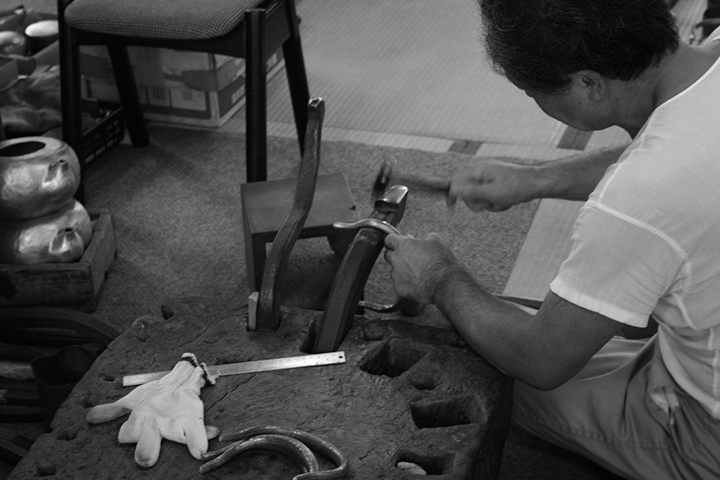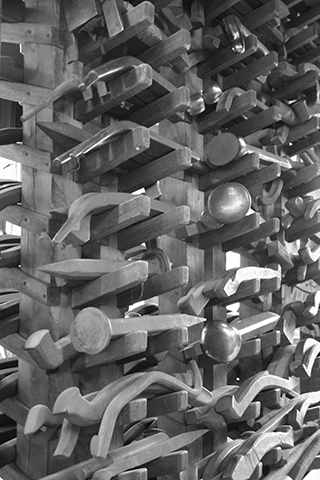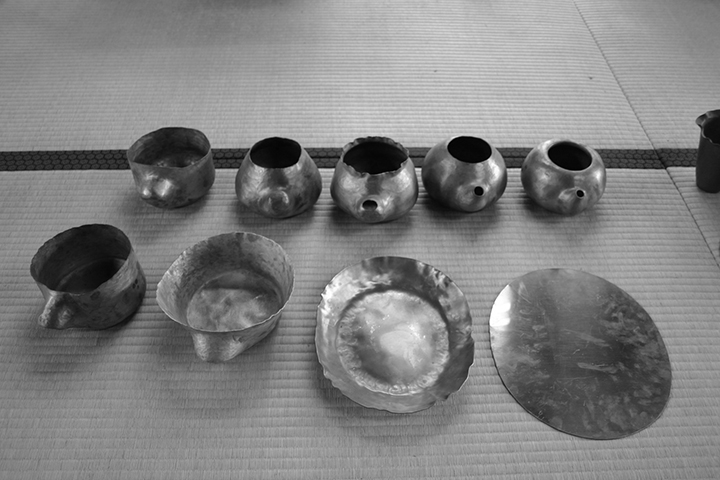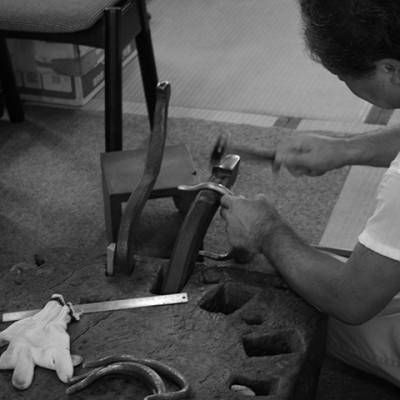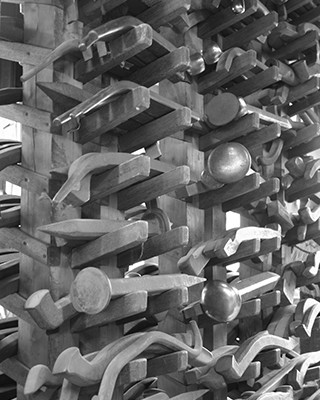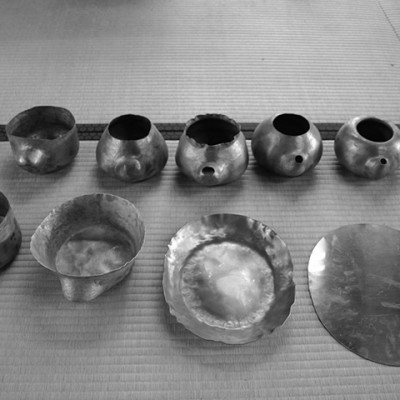鎚起 | hammeredware/
鎚起(ついき)とは、銅板を「金鎚(かなづち)」で「起」こす技術です。
二次元の銅板を叩いていくと、みるみる三次元の立体が形づくられます。一枚の板から作られる継ぎ目の無い器物、頭の中の設計図を元に最適な道具を選び出し、作業はリズミカルに進んでいきます。鎚起の技術は銅板を叩いて延ばすことだと思いがちですが、実は叩くことで板を縮めてもいるのです。厚い真鍮(黄銅)板も何度も叩くことで地金が締まり、板そのものの強度が増します。さらに、おりんや馨子(けいす)といった音を鳴らすための金属仏具は、叩きながら調律がなされます。叩く場所や強さの微かなズレで濁る音、柔らかくも迫力ある音を生み出すには10年から15年の鎚起技術の習得後にようやくその修業が始まるとさえいわれています。銅や金、銀、錫の器は使いこむほどに趣きのある艶や渋みを増し、それらは親から子、そして孫へと使い継いで行き、経年変化を楽しむものでした。素材本来の有する性質を巧みに操った日用雑器から その美しさを強調する美術工芸品まで、鎚起銅器は鎚目の美しさや着色・彫金の表面装飾など 様々な表情を見せてくれます。
TSUIKI, the copper hammering work, is the technique to shape a 2D copper sheet up into an 3D form by dynamic but delicate hammering.
By hammering, a 3D product comes out from a 2D copper sheet. The seamless bowl products get shaped by rhythmical hammering with best-selected tools from just only a sheet of copper based on the design in craftsman’s brain.
The TSUIKI technique might be recognized as extending out a copper sheet, however, in fact, shrinking it by hammering. By hammering, the base metal got tightened up?? the copper sheet(brass) itself becomes stronger.
Copper products are majorly used for the items for Buddhism ceremony such as small and bigger bell. The sound of those “ringing” copperware is tuned while hammering. To achieve the clear, deep and strong sound it should be, more than 15years of experience, it is said, are required.
The metal bowls made of e.g. copper, gold, silver, tin have "aging beauty" - the more they are used, they become more charming in the texture and atmosphere - therefore those metal wares have been used for long time, handed down from generation to generation.
From daily wares to the gorgeous art crafts, TSUIKI copper products has various faces of characteristics: the unique hammered texture, surface finishing by coloring or chasing etc.

